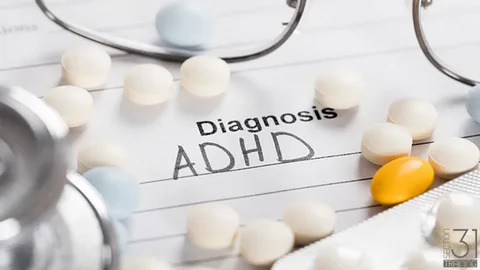
Contents
Overview
The neurodevelopmental disorder known as ADHD (Attention-Deficit/Hyperactivity Disorder) is typified by issues with hyperactivity, impulse control, and attention. Medication for ADHD, which addresses neurotransmitter imbalances in the brain, is a common part of treatment. The possible effect of ADHD medication on brain plasticity—the brain’s capacity for reorganization and adaptation—is an intriguing feature of the drug. This article explores the relationship between brain plasticity and ADHD medication, looking at how the latter may affect neural networks, cognitive abilities, and long-term consequences.
Knowing About Brain Plasticity
The ability of the brain to alter and adapt throughout life in response to experiences, learning, and environmental influences is referred to as brain plasticity, also known as neuroplasticity. It includes reconfiguration of function, strengthening of synapses, and structural alterations in brain connections.
Brain Plasticity Types: There are two primary categories of brain plasticity:
Physical alterations in the structure of the brain, such as the creation of new synapses, dendritic branching, and neurogenesis, are referred to as structural plasticity (birth of new neurons).
Changes in neuronal activity and connectivity allow various brain regions to take on new activities or make up for losses. This phenomenon is known as functional plasticity.
ADHD Medication’s Effect on Brain Plasticity
Neurotransmitter Modulation:
Medication for ADHD, especially stimulants like amphetamines and methylphenidate, affects neurotransmitters like norepinephrine and dopamine. These neurotransmitters are essential for learning, memory, and synaptic plasticity.
Enhanced Attentional Networks:
The prefrontal cortex, which is engaged in executive tasks, and the anterior cingulate cortex, which is involved in attention management, are two examples of the attentional networks in the brain that can be strengthened by ADHD medication. More effective information processing and cognitive control are encouraged by this increased connection.
Control of Neural Circuits:
Drugs affect neural circuits linked to attention deficit hyperactivity disorder (ADHD), including the default mode network (which is linked to daydreaming) and the fronto-striatal circuit (which controls impulsivity). Medication may improve behavioral control and cognitive performance by controlling these circuits.
Experience and Learning’s Role
Interactive Effects:
In order to influence brain plasticity, ADHD medications interact with learning opportunities and environmental exposures. Structural routines, positive experiences, and cognitive treatments support adaptive brain changes and enhance the effects of medicine.
Medication can help with skill acquisition by improving motivation, focus, and attention. Targeted therapies, including behavioral therapy, cognitive training, or educational assistance, may help individuals with ADHD take advantage of neuroplasticity and achieve better functional outcomes.
Effects Over Time and Neuroprotection
Long-Term Changes:
The structure and function of the brain may alter over time if ADHD medication is used. Research indicates that taking medications as prescribed is linked to better results in terms of social functioning, executive functioning, and academic achievement.
Neuroprotection:
According to some research, using an ADHD medication may have the following benefits: it may reduce neuroinflammation, maintain the integrity of neurons, and slow down the development of the neurodevelopmental abnormalities linked to ADHD.
Considering and Difficulties
Individual Variability: People differ in how they respond to medications for ADHD and in how plastic their brains are. Variability in treatment outcomes and brain adaptations is influenced by various factors, including age, genetics, comorbidities, medication adherence, and environmental effects.
Optimal Treatment Strategies:
A thorough approach to treatment is necessary to optimize the advantages of ADHD medication and brain plasticity. This could involve help from medical specialists, behavioral therapies, psychoeducation, medication management, and environmental changes.
Prospects for the Future and Research Repercussions
Advanced Neuroimaging Techniques:
New developments in neuroimaging, including electroencephalography (EEG), diffusion tensor imaging (DTI), and functional magnetic resonance imaging (fMRI), have made it possible to better understand the mechanisms underlying brain plasticity and the impact of medications on ADHD patients.
Personalized Medicine
To customize ADHD medication regimens and maximize neuroplasticity effects, personalized medicine takes into account each patient’s unique neurobiological profile, genetic markers, and biomarkers.
In summary
ADHD medication affects brain plasticity, cognitive abilities, and long-term results in people with ADHD in a variety of ways. Medication helps to improve cognitive control, academic achievement, and behavioral regulation by fostering adaptive brain alterations, improving attentional networks, and altering neurotransmitter systems. Personalized treatment approaches, educational interventions, and research projects targeted at optimizing neuroplasticity advantages and improving quality of life for individuals with ADHD are informed by an understanding of the complex interactions between brain plasticity and ADHD medication.